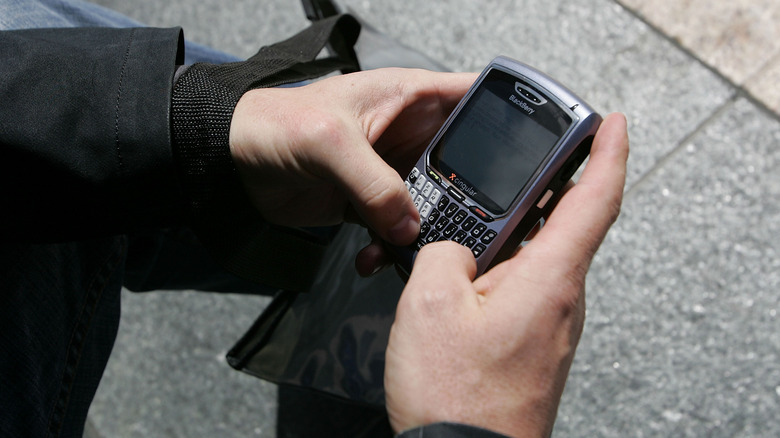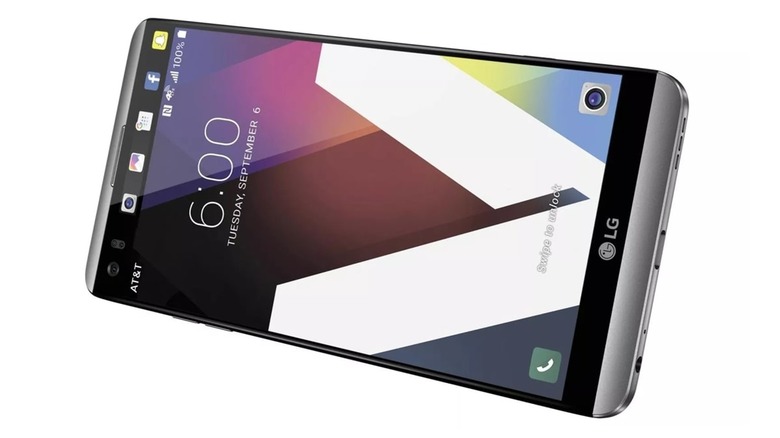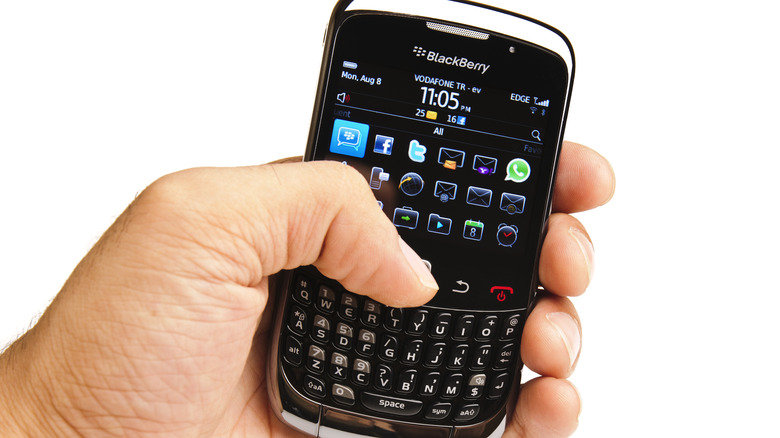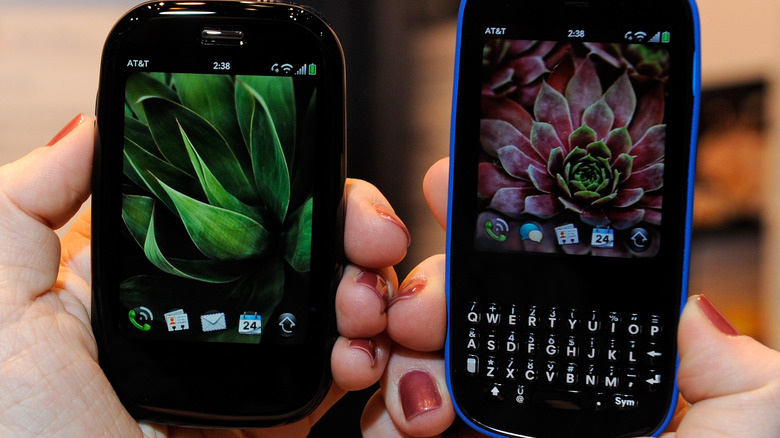3 Discontinued Smartphone Brands That Used To Be Pretty Successful
There are a lot of companies that make smartphones, but over the years, some have bowed out of the market. Most of those that are gone now weren't necessarily huge names, but among the dead brands, there are a few that stand out. In various different ways, they were major innovators, trying to figure out ways to enhance the smartphone experience and the value of their particular handsets. Some of them were at the forefront of the handheld computing device market before smartphones became commonplace.
In time, for various reasons, both internal and external, these companies elected to exit the smartphone market so as to focus on other areas where they could still make a profit. With the caveat that we're not going to include brands that were acquired by other companies and still exist on new phones today, like Nokia and Motorola, or brands like HTC that exited the U.S. market but still sells phones elsewhere, let's take a look at smartphones brands that came crashing down.
LG
One company that was on the cutting edge of the smartphone market for years and has since exited, is LG — the South Korean company that's probably best known today for its OLED TVs, soundbars, and home appliances. What made LG stand out from the competition was that, for the last several years of its mobile division's life, it had two separate flagship lines, the G series and V series, which leaned hard into pursuing a specific kind of enthusiast customer. Initially, the V series was distinguished from the G series by the inclusion of these more hardcore features, but in time, the two lines ended up being fairly similar.
One of those features became particularly identified with LG: an emphasis on high-end audio. The entire V series, as well as the G series from the G5 onward, featured both a high resolution digital-to-analog converter and high quality microphones leveraged by an audio recording app with a hi-res mode. Fully harnessing its power necessitated using one of a few specific music apps, but the audio features added a lot of value to the LG flagships by making them such powerful music players and field recorders at prices comparable to rival flagships.
LG announced the end of its smartphone business on April 5, 2021, in a press release. "LG's strategic decision to exit the incredibly competitive mobile phone sector will enable the company to focus resources in growth areas," it said in the release.
Blackberry
Though not the first smartphone, as that's credited to IBM's Simon in 1992, the Blackberry, from what was originally known as Research in Motion, was effectively the first modern smartphone to achieve mass popularity. Blackberry phones were an extension of the company's earlier pagers, which relied on their proprietary server technology to provide enterprise clients with the earliest version of push-based email to their employees' phones. By 2003, this took the form of a smartphone as we know them now, the BlackBerry 7230, which was preceded by some Frankensteined pagers and a phone that required a separate headset.
Blackberry had a significant head start — especially in the corporate world — when the iPhone launched in 2007 as an AT&T carrier exclusive in the United States. However, the iPhone immediately had a significant edge with its touchscreen interface, and soon, with its app store. It took years to catch up, with 2013's Blackberry Z10 evolving the brand via a more touch-centric device, right as the iPhone was achieving carrier ubiquity in the U.S. By that point, the iPhone — and the Android phones following its lead — had not only cut into Blackberry's consumer market share, but also the enterprise sector. Push notifications and easy integration of different email systems were now standard across other smartphones, so Blackberry's user base was down to longtime loyalists. In 2016, Blackberry announced that it was done making phones and pivoting to being a software company, and that was followed by the 2022 move to end support of its non-Android phones.
Palm
As the Blackberry was the enterprise email solution before the rise of the smartphone, the PalmPilot personal digital assistant served as the device that popularized what are now a bunch of standard smartphone features. PalmPilot users could easily keep track of their contact lists and appointment calendars the way we do now on our phones. This was, as with Blackberry, disrupted by the rise of the iPhone, so Palm responded by hiring recently "retired" Apple engineer Jon Rubenstein to help develop the company's first full-fledged smartphone and its accompanying new operating system, webOS. That phone would hit the market in 2009 as the Palm Pre, setting it up against the iPhone 3GS, Apple's third smartphone iteration.
The hype for the Pre greatly boosted Palm's stock price, but at release, some glaring flaws hurt it, like the body of the phone having unusually sharp edges and the software lacking an alarm clock at launch. A slow-growing app store didn't help, either. In the middle of the Pre's life cycle in 2010, HP bought Palm, in part to leverage webOS for a new tablet. That didn't click with the buying public, either, and neither did the Pre's follow-ups. With the sudden decline of the Palm brand, HP opted to sell it for parts: the hardware division and Palm name went to TCL, while webOS went to LG, which repurposed it as a smart TV operating system. As with Blackberry, a company that should have continued to be a player got complacent and didn't act quickly enough to fight off Apple.



